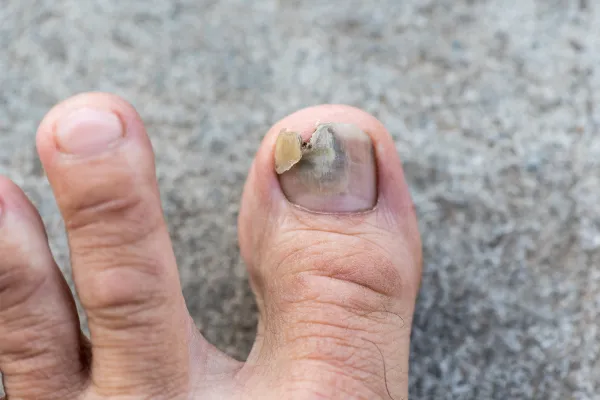
How to Tell If You Have a Fungal Nail Infection (And What to Do About It)
Let’s talk toenails. (Yes, seriously.)
They don’t usually get much attention—until something goes wrong. And when they do? Oof. Discoloration, thickening, crumbling, or that weird yellow tint? Yeah, we see it all the time.
So, if you’ve been staring at your toes and thinking, “That can’t be normal…” you’re not alone. You might be dealing with a fungal nail infection, also called onychomycosis. It’s more common than you think and, thankfully, very treatable—especially with the advanced options we offer at our clinic, like Class IV Laser Therapy.
Here’s how to spot it, what causes it, and what you can do to get your nails back to looking and feeling their best.
First, What Is a Fungal Nail Infection?
It’s an infection of the nail bed, nail plate, or both—caused by fungi that thrive in warm, damp environments (think locker rooms, sweaty shoes, and public showers). These little invaders sneak in through tiny cracks in the nail or surrounding skin.
Signs You Might Have a Fungal Nail Infection
If you’re experiencing any of the following, it’s time to pay attention:
Your nail has turned yellow, brown, or white
The nail has thickened and become hard to trim
It’s starting to crumble or flake at the edges
You’ve got an odd smell coming from your toes (yep, that happens)
There’s separation between the nail and the skin underneath
Even if it doesn’t hurt yet, ignoring the infection won’t make it go away—it usually gets worse over time. Left untreated, it can even spread to other toes or infect someone else in your household.
Common Causes (That Might Surprise You)
You don’t have to be an athlete or walk barefoot at the gym to end up with a fungal infection. Some sneaky culprits include:
Sweaty feet (especially if they’re stuck in shoes all day)
Minor nail injuries that create an entry point
Wearing the same socks or shoes repeatedly without allowing them to dry
Sharing nail tools or towels
Reduced immunity or circulation issues
Even tight-fitting shoes can trap moisture and increase the risk.
So… What Can You Do About It?
Here’s the good news: you have options—and not just the ones gathering dust at the back of the pharmacy aisle.
At Center for Ankle and Foot Care, we offer effective solutions that go far beyond the old “just paint on a treatment and hope” approach.
💡 Our Top Treatment: Class IV Laser for Nail Fungus
This is one of our go-to treatments—and it’s a game-changer. The Class IV Laser targets fungal cells beneath the nail without damaging healthy tissue. It’s fast, non-invasive, and doesn’t require any downtime. Best of all? No medications, no needles, no side effects.
Patients love it because:
It’s pain-free
There’s no recovery period
It helps clear the nail while promoting healthy regrowth
While results vary, most people see noticeable improvements within a few sessions.
Additional Treatment Options
Not every case is the same. Depending on how advanced the infection is, we may also recommend:
Topical antifungals to apply directly to the nail
Debridement, where we gently trim and thin the nail to improve treatment penetration
Oral medications, in more severe or stubborn cases (though not everyone is a candidate due to potential side effects)
Prevention Tips to Keep the Fungus From Coming Back
Once your toenails are clear, you’ll want to keep them that way. Our team can guide you through smart foot care habits, like:
Wearing breathable shoes and moisture-wicking socks
Keeping your feet dry and clean (especially between the toes!)
Avoiding barefoot walks in public places like pools or saunas
Disinfecting your nail clippers regularly
Ready to Clear It Up?
If your toenails are looking suspicious, don’t ignore them. Book an appointment with our team, and we’ll get you set up with a personalized treatment plan—whether that’s Class IV Laser Therapy or another solution.
Let’s get your toes back to looking as good as the rest of you.




